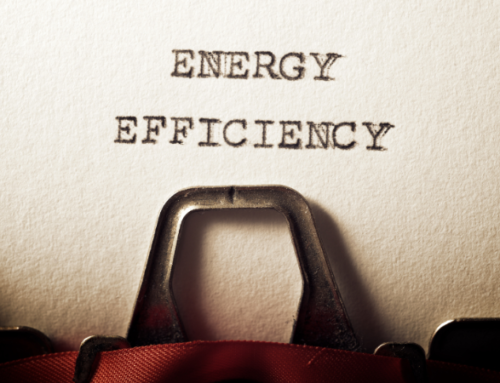Electricity congestion charges, also referred to as transmission congestion, are the costs associated with delivering power to specific locations on the electric grid. Because demand on the electricity grid is locationally based and unpredictable, grid operators must respond in real-time in order to meet all of the needs of electricity grid participants. It can cost more to send electricity to an area of high demand when compared to less congested areas, hence creating congestion cost. In this article we will explore energy congestion, the dynamics of the transmission network, and how local congestion affects overall electricity prices.
What Is Congestion In The Power System?
The U.S. electricity grid is made up of several independent system operators (ISOs), or sometimes called regional transmission organizations (RTOs). Within each electrical system exist many zones and location-based nodes where electricity is delivered and ultimately consumed. Each node on the electric grid settles at a different wholesale energy price based on the specific supply and demand dynamics of that location. This is the essence of electricity congestion. Let’s explore some of the more important elements in more detail.
Electric Grid Congestion Example
To fully understand how congestion works within an electrical transmission system, it’s best to look at some analogies. If you have ever been in a New York City taxi cab, then you know that it can cost more to travel the same distance during rush hour. Let’s explore the current NYC taxi fare calculation:
- $3.00 initial charge
- Plus 70 cents per 1/5 mile when traveling above 12mph or per 60 seconds in slow traffic or when the vehicle is stopped
- Plus 50 cents MTA State Surcharge for all trips that end in New York City or Nassau, Suffolk, Westchester, Rockland, Dutchess, Orange or Putnam Counties
- Plus $1.00 Improvement Surcharge
- Plus $1.00 overnight surcharge 8pm to 6am
- Plus $2.50 rush hour surcharge from 4pm to 8pm on weekdays, excluding holidays
- Plus New York State Congestion Surcharge of $2.50 (Yellow Taxi) or $2.75 (Green Taxi and FHV) or 75 cents (any shared ride) for all trips that begin, end or pass through Manhattan south of 96th Street
- Plus tips and any tolls
When looking at the details of a cab fare in NYC, we see that there are rush hour surcharges for traveling between 4pm and 8pm on weekdays. We can also note that the standard $0.70 per ? mile is charged when the vehicle is traveling above 12 mph. However, when the vehicle is stopped or traveling at speeds less than 12 mph, the $0.70 is charged by the minute instead.
The cost to travel from the Upper East Side to Times Square can be more expensive when the vehicle is stuck in traffic compared to times with no traffic – even though it is the same distance traveled!
The NYC taxi cab fare analogy is often used to describe congestion costs on the electric grid. When there is a lot of demand in a particular area of the grid (traffic) it costs more to supply power to that region and drives up congestion costs.
Locational Marginal Price (LMP)
Locational Marginal Price (LMP) is the official term used in transmission network systems that represents the cost of delivering electricity to a specific location on the electric grid. It is expressed in dollars per megawatt-hour ($/MWh), and is determined using a specific method that calculates the cost of electricity in real-time. This method balances the supply of electricity in the local system with the demand, while also managing the limitations of the transmission network. LMP incorporates the following costs:
- Energy
- Transmission system congestion
- Line losses
It varies by location and is calculated for all points of energy injection and withdrawal on the grid.
How Much Does Electricity Congestion Cost?
Electricity congestion costs are calculated for each LMP using the following formula: (Hub Price $/MWh) – (LMP Price #/MWh). The hub is the most liquid trading point of the electricity region. The LMPs, as described above, are the costs at each specific location on the grid. Similar to the natural gas basis market, the difference between these prices reflect total costs of power congestion.
Congestion costs can vary significantly from region to region and LMP to LMP. These costs can also be quite different depending on the time of year, weather, local electricity demand from consumers, and other factors affecting the reliability of the transmission network. For example, if a major transmission line goes down limiting electricity supply in a certain region, the cost of the LMP (or congestion) will increase until the line is repaired.
According to a report released by Grid Strategies, U.S. power grid congestion costs jumped almost 60% in 2022 when compared to 2021. Total congestion in 2022 amounted to $20.8 billion from $13.3 billion the year before. Many energy market experts attribute this drastic increase to natural gas price increases in 2022, since most of the electricity generation source stack is comprised of natural gas power generation.
Congestion Management
There are several different strategies implemented by retail energy suppliers, energy brokers, and end-user customers to limit their risk exposure to volatile congestion costs. Let’s explore how both suppliers and consumers can protect themselves:
Retail Energy Suppliers
When offering fixed electricity rates to their customers, retail suppliers need to consider the cost of electricity congestion at the LMP nearest to the customer. Since most electricity is hedged in the wholesale energy market at the nearest trading hub, the supplier assumes the congestion risk when delivering power to the customer. One way suppliers can mitigate this risk is by purchasing financial transmission rights, or FTRs. FTRs allow retailers to hedge congestion risk by taking ownership of a transmission pathway between a hub and LMP location.
Suppliers with many customers in a concentrated region will purchase FTRs directly from an auction or in a secondary market. Suppliers with fewer customers are forced to work with larger energy wholesale companies since purchasing an FTR for a small group of customers might not make financial sense. In these wholesale-retail arrangements, the wholesaler will hedge congestion on the retailer’s behalf.
Energy Customers
Energy customers can hedge congestion risk by structuring favorable retail electricity supply agreements. It’s advisable for buyers to seek expert advice from an energy broker to determine the best-fit retail energy contract. Some agreements allow for customers to lock in congestion costs as part of their total price for energy. Other contracts allow customers to pay for index power at the LMP price. This exposes the customer to congestion cost fluctuations, however, could be beneficial depending on when the customer is using power. For the largest of energy customers, they might be able to register directly with the grid operator as a sub-account and hedge congestion costs by purchasing FTRs directly.
Want To Learn More About Power Congestion And What It Means To You?
Our team of electricity market experts has decades of experience evaluating wholesale electricity prices, tracking LMP price trends, and hedging electricity congestion. Contact us today to learn more about your local congestion cost risk and ways to structure electricity supply agreements to maximize your benefit.



